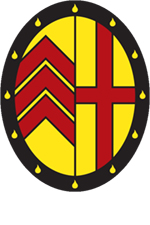Clare College
Experience, the universal guide, plainly shows that learning is no small advantage in every rank of life, ecclesiastical or civil" From Lady Clare’s Preamble to the Statutes, 1359

Originally founded as University Hall in 1326, the College was later given the name of its principal benefactor, Lady Elizabeth de Clare (1295-1360). Her original endowment allowed for the maintenance of 15 scholars (later Fellows), including six bound by holy orders, and 10 younger, ‘poor scholars’ (later students). In her Preamble to the Statutes of 1359, Lady Clare sets out the remarkably enlightened attitude to learning and university education which has guided the college for nearly seven centuries: ‘Though many people seek it [learning] in many ways, it is best acquired in a recognised university community; and when its pupils have acquired it and tasted its sweetness, it sends them out well qualified to rise according to their merits to different ranks in church and state’. This liberality of approach has characterised the College into the 20th and 21st centuries – Clare was one of the first colleges to fully admit undergraduate women in 1972, the first to appoint a female Chaplain (Dr Vivienne Faull) and later the first female Dean (Dr Jo Bailey Wells). We count among our alumni such figures as the reformer and martyr Hugh Latimer (1485-1555), First World War poet Siegfried Sassoon (1886-1967) and naturalist and broadcaster David Attenborough (b 1926).
Clare College Archive includes administrative and academic records, documents of college clubs and societies, finances, land and property owned by the college and personal papers relating to individual members of the College. Much of this documentation dates from the sixteenth century –unfortunately the early days of the medieval college are largely absent from the archive as nearly all of the original muniments were destroyed in a fire in Old Court which destroyed the Treasury and Masters Lodge in 1521. Nevertheless, the Archives provide a valuable insight into many aspects of the history and life of the College from the 16th century to the present day.

